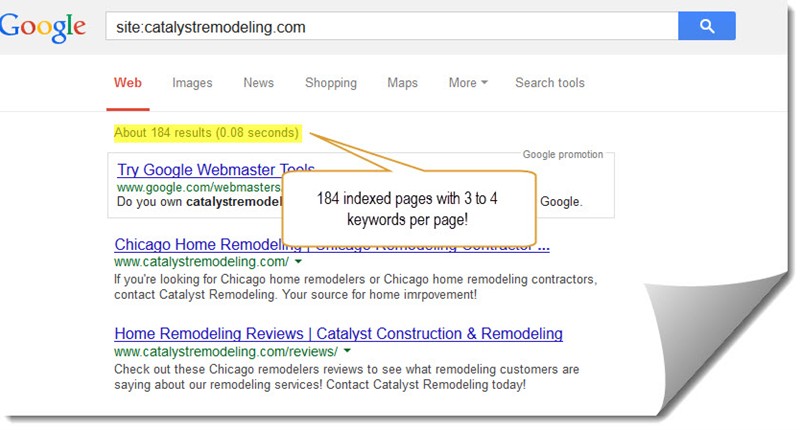Google Has Given Home Improvement Companies a Better Way to Find Quality Leads

Attic remodeling in Chicago
Interior remodeling company in St. Louis
Basement renovation company in New England
In the SEO industry, the above phrases are known as “long-tail keywords” or LTKs. They are longer and more specific than their “short” counterparts, which are more frequently searched. However, although long-tail keywords are individually less popular, they ultimately account for the majority of search-driven traffic.
In last week’s article, we talked about the slow demise of Search Engine Results Page (SERP) rankings and how they’re no longer a reliable metric to judge your online marketing by. Google now wants to see websites that are built around long-tail keywords because 1) they do a better job of articulating the services people are looking for and 2) they align better with Google Voice Search and other intuitive technologies of the future.
The result is better-quality leads and more of them.
Home Improvement companies, specifically, can do very well for themselves by creating copy around long-tail keywords because:
The same amount of effort will take you farther.
Take Catalyst Remodeling, for example. A premier home improvement company and long-time Spectrum client, Catalyst has taken full advantage of the benefits of long-tail keyword content creation:
By creating nearly 184 pages with 3-4 long-tail keywords each (see below), they’ve built a website with at least [184 X 3] 552 LTKs. If, at the very least, each LTK were to bring 6 visitors per month to their site, that would equate to 3312 visitors that are of a much higher quality than, say, visitors who landed on the site because they searched “Chicago remodeling company” or some other similarly general and vague short-tail keyword.

Key takeaway: a variety of long-tail keywords stretched out across a website’s content will reel in better-quality leads (because LTKs are more specific) and more of them (because there are only so many times “Chicago remodeling company” can reasonably appear in your copy without it looking like a case of keyword stuffing).
People love to fantasize.
Long-tail keywords = better content (because you don’t have to work around awkward short keywords).
Better content, in turn, yields more vivid imagery that consumers are more likely to appreciate and respond to. Think of it this way: every prospect has an idea of what they want their kitchen or bathroom or basement to ultimately look like. Illustrating their fantasies with fluid, well-written copy that isn’t choppy (due to ill-fitted keywords) will only serve to create a better user experience and more conversions.
It’s easier to highlight services you specialize in.
Let’s say your home improvement company does staircase railings better than any other company in your market. It’s your forte and, frankly, you’re known for the stellar results you deliver. Well now, with long-tail keywords, you can target online consumers who are looking for your specific service in a way Google loves and will actually reward you for.
By peppering LTKs like “staircase railing renovation company in Chicago” or “Chicago banister remodeling company” throughout your website’s content, you’re building a powerful search presence for a very specific service. And although you won’t appear in more results, the results you do appear in will target leads that are much better and far more likely to convert.
Bottom line:
Sophisticated search marketers have already forgotten about short-tail keywords because there’s no point to them anymore. Google has gone in a different direction – one that values intuitiveness and forward thinking. Google has set the standard for new and exciting technologies that will make the Internet a friendly place through customization and individualization.
Fact: Companies that follow suit early will reap the benefits of falling in line.
Call Spectrum today or send me an email to receive a free site architecture and keyword evaluation!








